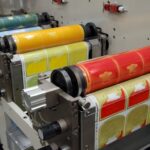For anyone eager to make a splash with their fundraising event, knowing how to make fundraiser tickets is a crucial element of planning. Whether you’re orchestrating a charity gala, a school event, or an exciting community project, successful ticket design and production can significantly impact your event’s success. In the world brimming with events vying for attention, its crucial that your tickets not only serve their primary function but also capture the attention of potential attendees.
Why Fundraiser Tickets Matter
Fundraiser tickets play an integral role in your events success. They are more than just entry passes; they are a representation of the event itself. Well-designed tickets can convey professionalism and credibility, while a poorly made ticket might leave a potential attendee unimpressed.

Understanding the Basics of Fundraiser Tickets
Before diving into the specifics of how to make fundraiser tickets, its essential to comprehend what they entail. Typically, fundraiser tickets include the event’s name, date, location, and time. They might also feature a unique design or theme related to your event.
Essential Elements of a Ticket
- Event Name: Clearly state the main title.
- Date and Time: Ensure accurate details to avoid confusion.
- Venue Details: Provide complete location information.
- Ticket Number: Useful for tracking attendees.
These are the fundamentals, but therere many more elements you can consider to add a unique touch to your tickets.
Designing Your Fundraiser Tickets: Big Ideas
Design is where creativity meets purpose. A ticket design must be eye-catching yet informative. Heres how you can begin crafting yours:
Use of Colors and Images
Colors and images are impactful in communicating your events mood. For example, a black-tie gala might use elegant gold and black colors, while a summer carnival could utilize bright, playful hues like yellows and blues.
Typography
Typography is not just about choosing a font; its about finding the right style. Choose readable fonts that are consistent with your event’s theme. Avoid overly decorative fonts that might make the ticket hard to read.
Technology to Aid Ticket Creation
Utilizing the right tools can dramatically change the quality of your tickets. Many wonder which printer is best for label printing, as discussed here.
Graphic Design Software
Consider using design platforms such as Adobe Illustrator, Canva, or CorelDRAW. These tools offer templates and resources specifically tailored for ticket designs.
Choosing the Right Printer
The quality of your printed tickets will highly depend on your printer. Exploring this guide will give you insights into selecting a suitable printer.
Printing and Production: It’s Here Now!
After designing, the next phase in how to make fundraiser tickets is the actual printing process.
Paper Selection
The type of paper adds to the tactile experience of the ticket holder. Thick, glossy paper often works well since it gives a premium feel.
Consideration for Quantity
You should always print a little more than expected attendees to cover for errors or last-minute sales.
Manual vs. Automated Ticket Production
Both methods have their pros and cons.
Manual Designing
Allows for a more personal and tailored touch. Great for unique, smaller events.
Automated Software Solutions
When you anticipate bigger numbers, automated solutions can ensure quick production allowing you to focus on other event elements.
Digital Alternatives: Fundraiser Tickets Approved!
In an era dominated by the digital, considering e-tickets can serve various purposes and conveniences.
Going Paperless
E-tickets can reduce your carbon footprint, comply with health guidelines, and streamline entry to your event.
Integrating QR Codes
Embedding QR codes can simplify check-ins and provide additional security features by ensuring authenticity.
Securing Your Event with Tickets
Tickets are valuable; hence, ensuring their security is vital.
Unique Codes and Features
Use unique numbers, barcodes, or QR codes to prevent duplication and ensure that each attendee’s entry is accounted for.
Anti-Theft Measures
Consider incorporating touch-to-see security features, unique inks, or holographics to prevent counterfeiting.
Post-Event Considerations
Following your event, certain aspects of the ticketing should still be reviewed.
Analyze the Data
Use the ticketing data collected to determine patterns, sales efficiency, and areas for improvement in the future.
Feedback and Improvement
Gather feedback from attendees regarding the ticketing process and explore areas to enhance for subsequent events.
Common Mistakes to Avoid in Ticket Making
Even with the best intentions, mistakes can happen if all details are not thoroughly considered.
Not Proofreading
Ensure all text on your tickets is double-checked for accuracy to prevent miscommunications or issues at the event.
Ignoring Branding
Tickets are a part of your event branding. Ensure that they align with your brand’s overall theme and message.
Future Trends: What’s Next for Fundraiser Tickets?
As technology advances, so does the ticketing world. Heres a peek into the future.
Interactive Tickets
The future could see tickets that are not only entry passes but also interactive memory cards of the event with multimedia information.
Augmented Reality Components
Imagine tickets that offer enhanced experiences via AR; this could include stories about the event, video highlights, and more.
Conclusion: The Impact of Making the Right Tickets
The journey of learning how to make fundraiser tickets expands beyond just knowing the steps; it’s about integrating creativity, technology, and security to ensure that your event stands out to every ticket holder.

FAQs
- Why are the design elements on fundraiser tickets crucial?
Because they help create the initial impression and evoke interest in the event.
- What technologies can aid in ticket creation?
Design software like Canva and Adobe, and platforms for incorporating QR codes are effective tools.
- Are digital tickets as effective as physical ones?
Yes, digital tickets can be just as engaging and also align with modern eco-friendly practices.






